The difference between the work of the architect, who draws by projecting a building in the future, and that of the photographer, after choosing the subject of a photograph, implies a very different relationship with time: the time of the drawing is not uniform, the architect gives more time to what he considers important, whereas time is uniform in a photograph, it has been captured in an instant, its figuration is not impregnated with experience or consciousness. The photographer Gabriel, who wanders among ruins, not only stands before himself as an architect but also as an architectural photographer of brand-new architecture that is about to begin its useful life and has not yet been affected by any wear and tear. Gabriel displays a unique and rapacious sensibility, compatible with that of the Bauhaus theorists who associated photography with a form of design that, like good architecture, seeks both the creative and the impersonal, portraying that real order that heroically perseveres while decay gradually triumphs, subjected to a pathos that finds in photography the aptitude to find beauty in the decrepit.
Like Paul Klee's Angelus Novus - which belonged to Walter Benjamin and with which he always traveled - Gabriel, at the antipodes of the mythic necessary for a work to take on the appearance of immortality or transcendence, is determined to save the past of architectures that belonged to our everyday life. To this end, as Benjamin himself pointed out, he proposes the contemplation of a new beauty in what disappears and which, beyond monuments, would have the right, like all human activity and all human destiny without exception of which we have preserved testimony or news, to claim for itself a historical value. To this end, as Roland Barthes pointed out, it makes the photograph, mortal, the general and somewhat natural witness of "what has been", in a society that long ago renounced the Monument."
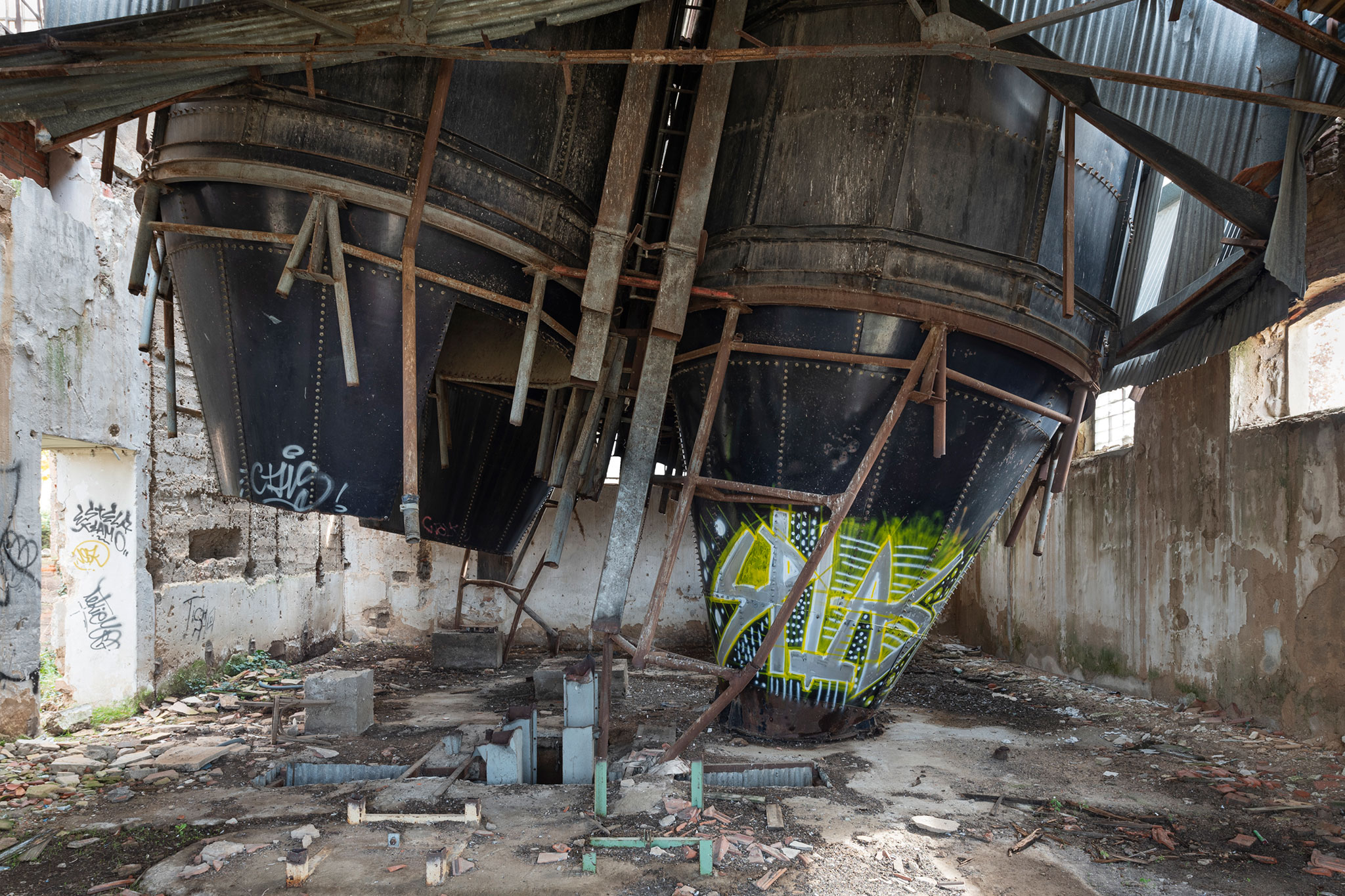
Las Luisas flour factory. Trigueros Del Valle, Valladolid. Photograph by Gabriel Gallegos Alonso.
"In 'Camera Lucida', Barthes also pointed out that 'the Greeks entered Death by walking backwards: they had the past before them'. Barthes maintains that there is an unavoidable link between photography and mortality from the very noema of photography, the 'this has been' of the necessarily real thing that was placed in front of the lens and without which there would have been no photography, that which has been irrefutably present, and yet it has already expired. Gabriel makes emerges from the triviality, with the impetus of an emotion that only belongs to him, the impressions that he has captured of those ruins that, otherwise, could be seen with indifference, through an intention of reading that also concerns him as an architect. In a certain sense, by photographing these ruins, the photographer-architect endows them with a dignity that, in this time of uncertainty inherited from the regulatory deregulation of postmodernity, turns them into architectures as possible as many architectures of the spectacle, or perhaps even more so. altering them as subtly as systematically with a full vision of rigour and discipline often absent in contemporary architecture. In this sense, he endows these ancient spaces with a fullness opposite to the authentic expiration of these architectures: testifying that they are real buildings, the photo surreptitiously induces one to believe that -somehow- they fulfil their function even in full decline."
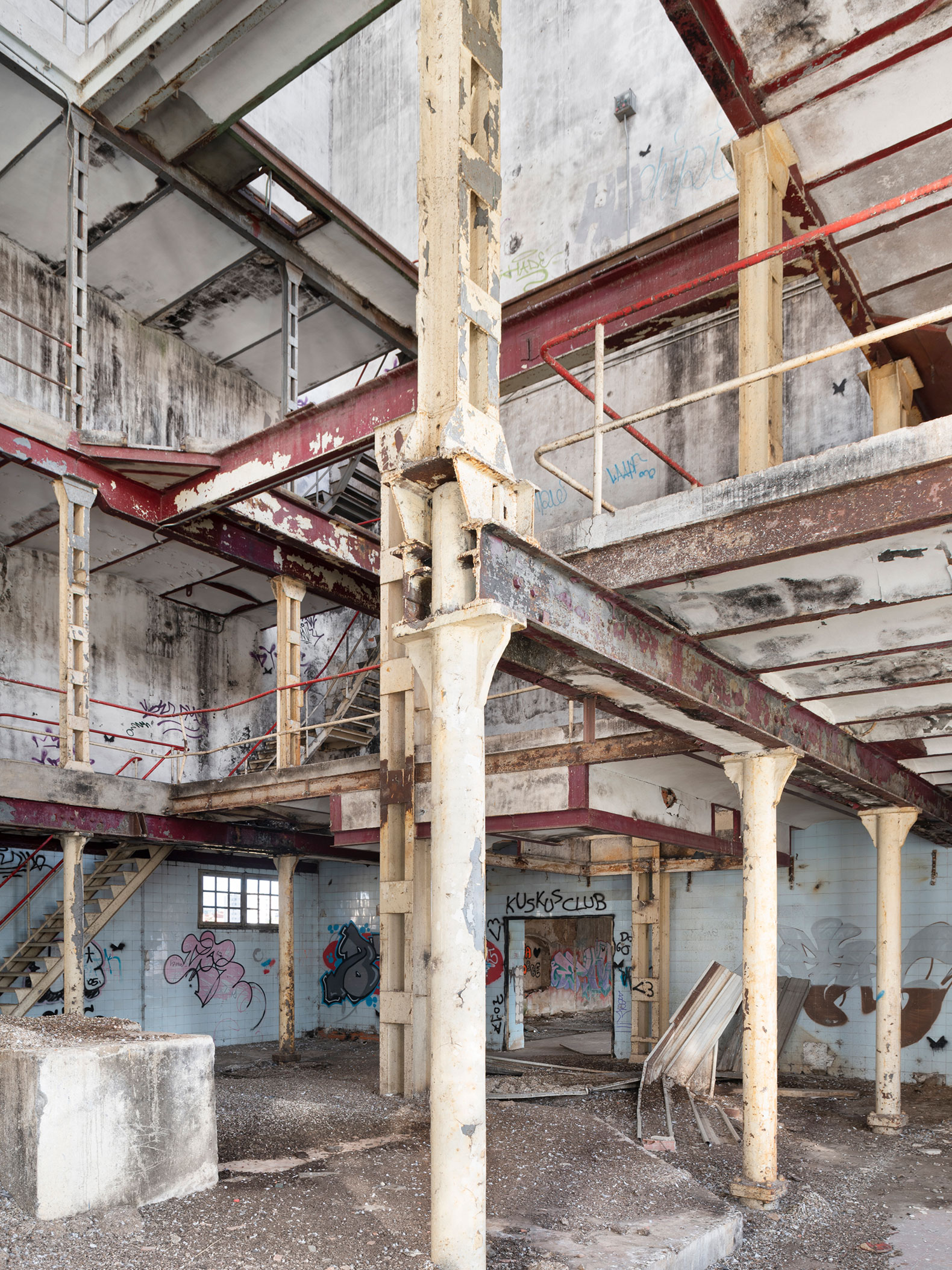
Santa Victoria Sugar Factory. Valladolid. Photograph by Gabriel Gallegos Alonso.
"Since the discovery of the writers of the s. XVII turns the vision of the ruins into something of genuinely popular taste and the romantic extension of appreciation for those delicate forms of decrepitude, sometimes even through the artificial ruin, modernity would arrive with the mutation of that beauty of the shabby photographing reality itself. The idea of contingency in photography confirms that everything is perishable, the arbitrariness of its evidence testifies that reality is unclassifiable. The effectiveness of this particular photographic expression of the loss lies in the way in which it enriches the familiar iconography of mystery, mortality and expiration through a special quality of light, the choice of the moment, a look that transforms the now into the last. Despite the significantly uninhabitable condition of the spaces that are photographed, the images provoke and come from the nostalgia that participates in mortality, in vulnerability. As Susan Sontag points out, in perfect harmony with Barthes, “all photographs are memento mori”. In fact, what we see in Gabriel's photographs "has been" twice, we have lost it twice, we see nothing other than the spectrum of the spectrum."
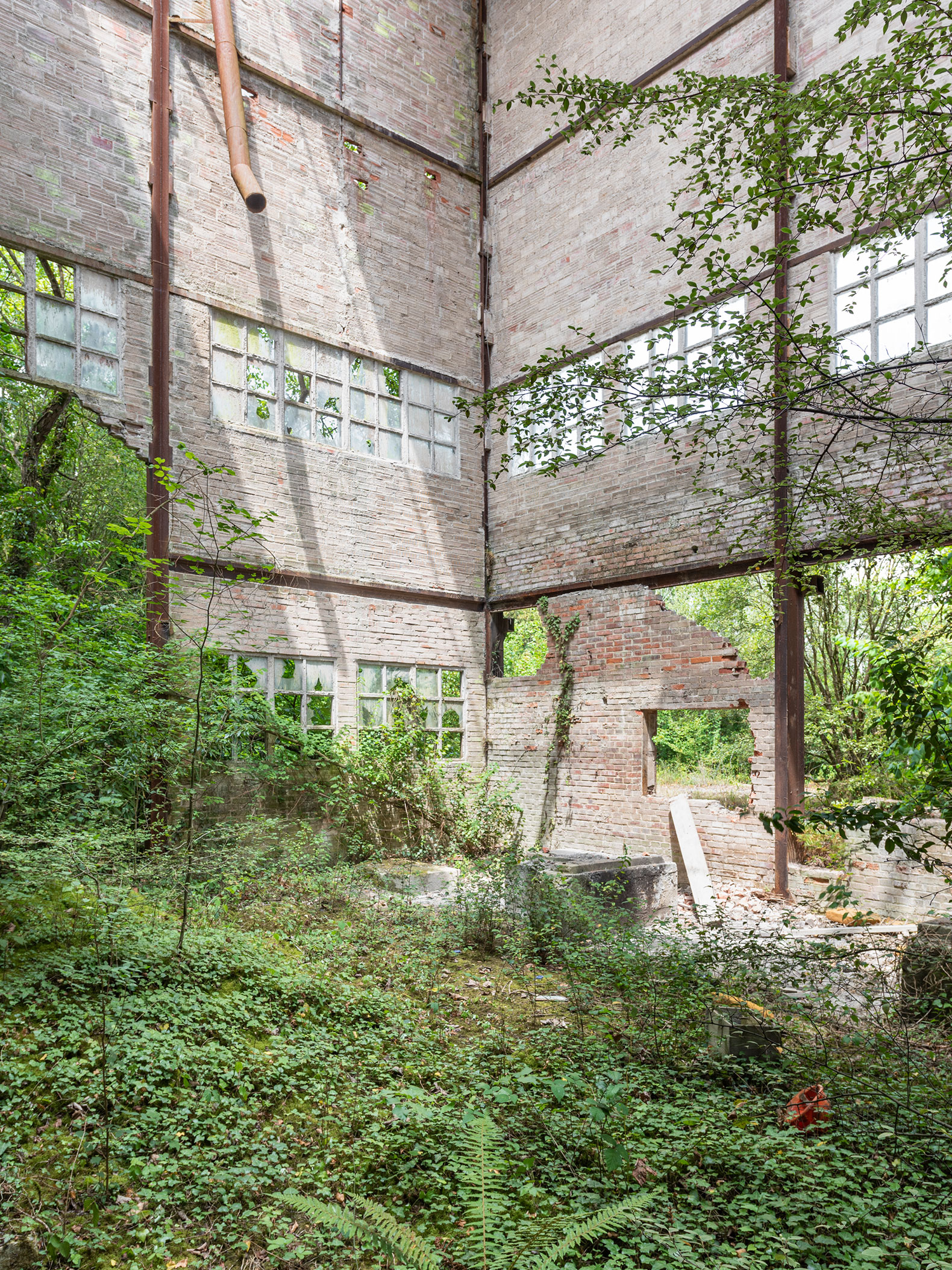
Guisasola Ceramics Factory. Llanera, Asturias. Photograph by Gabriel Gallegos Alonso.
Description of project by Gabriel Gallegos Alonso
I will now try to explain the three pillars on which this personal project is based, which for some time now has become my escape valve, but also a form of learning and personal and professional development.
The "urbex" (urban exploration) is an activity that aims to go into abandoned places, usually buildings, but also villages, enclosures, and underground spaces..., either for pure entertainment, curiosity or for the multitude of unusual sensations that are experienced when going beyond the dubious limits of legality and explore places full of dangers. I'm going to take photos.
It is a discipline that is widespread and practiced all over the world: who has not at some time sneaked into a supposedly uninhabited building? For many, it is a way of life. There are many local organizations and an international community which set out certain "rules" to be respected, the aim of which is to try to normalize a somewhat clandestine activity. Namely: you are not allowed to force your way in (a seemingly unimportant aspect that can make the difference between being punished or not if you are discovered); you must not break or take anything, nor alter the state in which you find the property. We are explorers, not vandals, thieves, or graffiti artists. As far as the latter are concerned, although they may be useful in identifying an uninhabited place, and the colorfulness of their work provides a tonal counterpoint to the photographs, in the end, they undermine the integrity of the architectural piece, which is the original work.
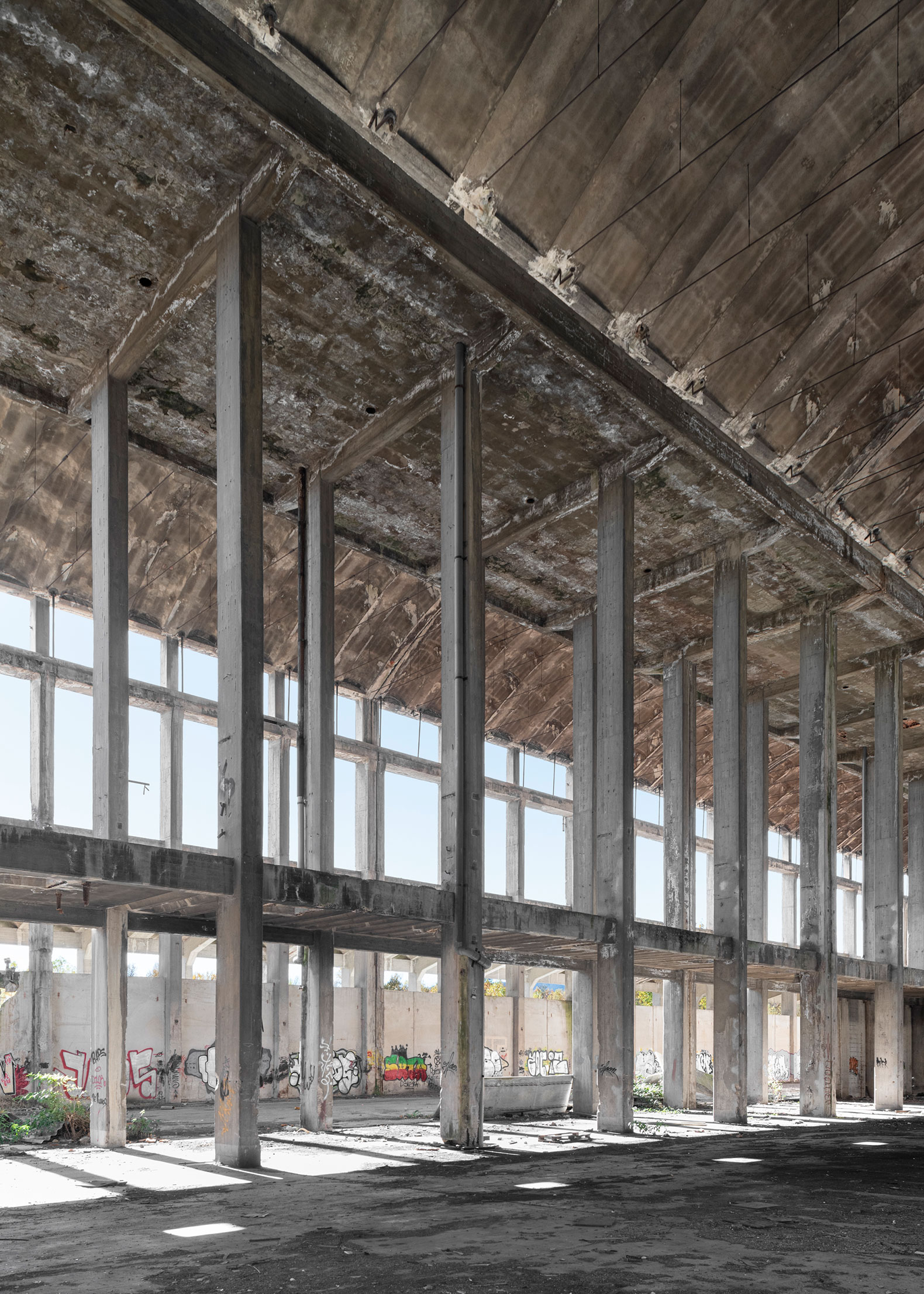
Fabricación Española de Fibras Artificiales SA (FEFASA). Miranda de Ebro, Burgos. Photograph by Gabriel Gallegos Alonso.
Finally, we are not allowed to reveal locations, we do not want to turn these places into pilgrimage centers. We must try to keep them in the best possible condition for those who come after us. Many of these buildings are cultural heritage sites and we are responsible for their conservation.
In addition, there are other types of recommendations to take into account if you want the experience to be fully satisfied and you want to repeat it. If something goes wrong, you may wish you had stayed at home that day. This has happened to me more than once, but I have learned valuable lessons from my experiences. Urban Exploration is something to take very seriously.
Never explore alone. In case of unforeseen circumstances, it is essential to have help. I have to confess that I can't always do this, as unfortunately there are not always people available and my days are often too intense for many. I like to walk around the place at my leisure and above all to focus on the photograph, without rushing, something that can try anyone's patience. In any case, even if I cannot be accompanied, I always inform others of my whereabouts.
It is useful to obtain any information about the site you intend to visit. For example, possible access areas, whether it has or has had any kind of surveillance, whether it is likely to be inhabited or whether there is any kind of activity. Sometimes a building that appears to be abandoned is not. The community can be of great help in this regard.
Once inside, it is important to do an initial walk-through to identify dangerous areas, and possible exit points and to make sure that no one is inside.
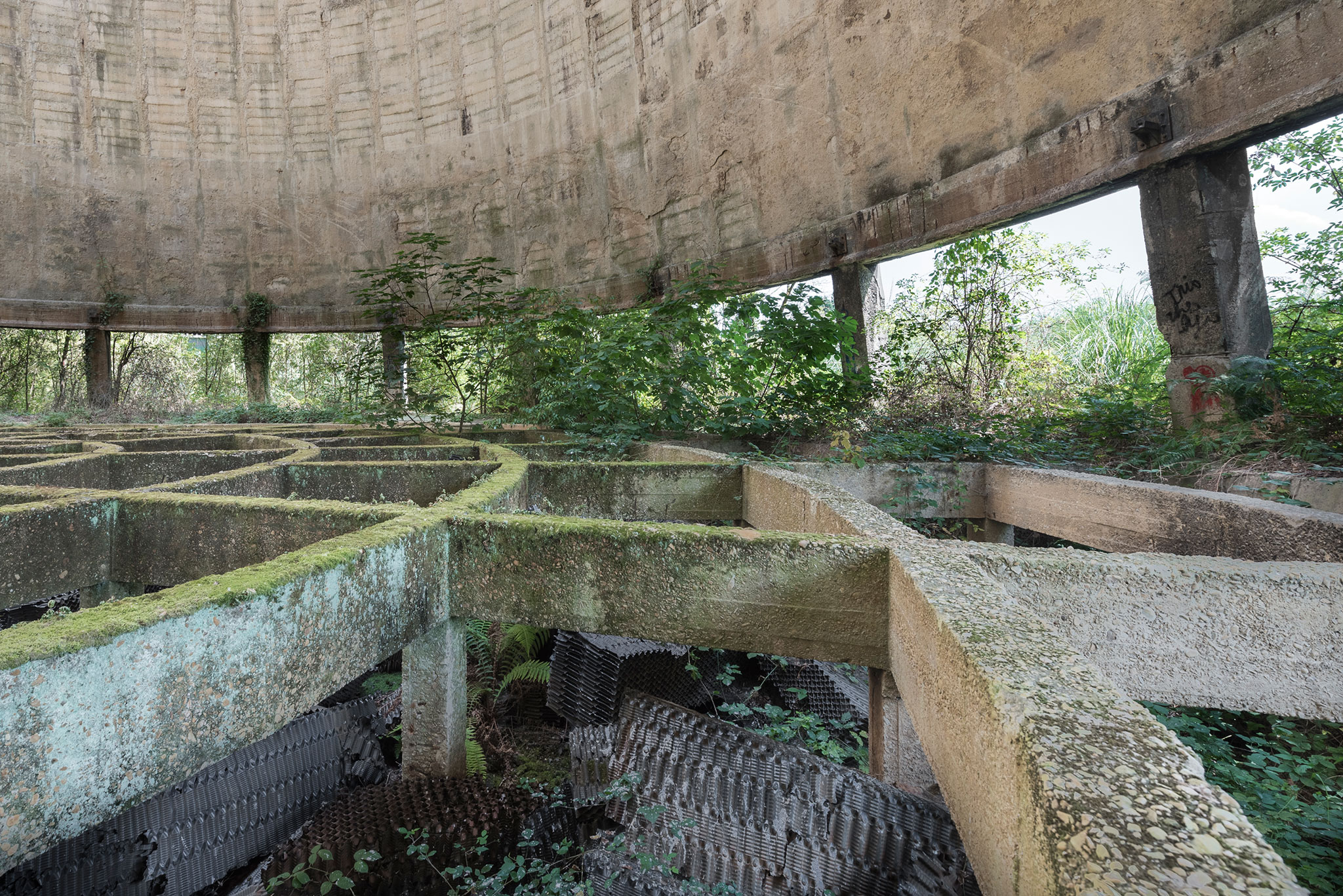
Nitrastur Factory. Langreo, Asturias. Photography by Gabriel Gallegos Alonso.
Finally, it is important to be properly equipped. Clothing should be comfortable but protective. Shorts are not advisable and footwear should be sturdy, as the ground is often littered with glass, scrap metal, and sometimes quite dense vegetation. There is a chance that the wind chill inside the buildings may be slightly cooler than the ambient temperature, so even if you don't think you'll need it, take some warm clothes with you. In addition, it is advisable to carry a bag with a spare set of clothes so that you can return home as comfortably as possible. Gloves, helmets, and other protective gear are always useful, even a face mask, as the environment can sometimes be unbreathable. Other common accessories on exploration are a first aid kit, towel, torch, and of course water and some food.
And all of this without getting into photography per se.
I developed this hobby a little more than six years ago when I went to a place known to many of my fellow citizens: the recently disappeared chalet of Parquesol in Valladolid. I was always fascinated by that unfinished, sculptural piece, dominating from the top of the hillside, like a viewpoint, as if it had been conceived for that purpose. I remember it was one Saturday morning when I squeezed through a hole in the fence. I went there without any of the aforementioned accessories and, of course, without any rules or considerations, as at that time I was a complete ignoramus on the subject. All the photographic equipment I had with me was the camera. No tripod, no flash, no off-center, no wide-angle, no telephoto lens, no filters, no remote shutter release, no spare batteries. And worst of all: I was shooting in automatic mode.
Nowadays it would be unthinkable for me to go on an excursion of this kind without planning down to the smallest detail. Once I have chosen the destination (from among all those that I have accumulated on a map by researching, observing, and sharing) and after checking the weather forecast, I prepare my increasingly abundant equipment and organize the day based on the expedition which, depending on the size of the target or the distance, can take up a whole day.

Santa Victoria Sugar Factory. Valladolid. Photograph by Gabriel Gallegos Alonso.
You'd be surprised at the number of sensations you can experience when you find yourself completely alone in an unfamiliar place. The uneasiness can be overwhelming in some locations, but once you become familiar with the surroundings the experience can even be therapeutic. Absolute silence and total communion with nature within spaces some of them of the same magnitude, materiality, and light as those places of worship where many come to seek inner peace, to find themselves, or simply to disconnect. Places that undoubtedly move.
I have been training for some time in the complex field of architectural photography. Like any discipline, there is a learning process, but no matter how much time you spend on theory or how many references you take from other professionals, it is necessary to practice. Without demonstrable experience, it is difficult to get commissions, and without them, it is not possible to master the technique. I am sure you are familiar with the equation.
That is why I saw in this type of space a real possibility to carry out this task, to put into practice what I had learned, and to try new things. I approached each visit to one of these places as a photographic report.
In the beginning, as I mentioned earlier, I took with me the basic photographic equipment that many of you will have at home. It was all I had at that time. Gradually I realized that if I wanted to reach the next step I needed something more, as I wasn't able to get a certain shot with what I had at hand. This is how, moderately (because one thing is for sure, photography is not cheap), and following the advice of some colleagues, without whom I would not be at this point, I was incorporating working tools. It must be remembered that moving around in this kind of place with a lot of weight is not the most advisable thing to do, but for me, it is a necessity, because without it I would not be able to achieve my purpose: to pursue this technical evolution and obtain professional quality images.
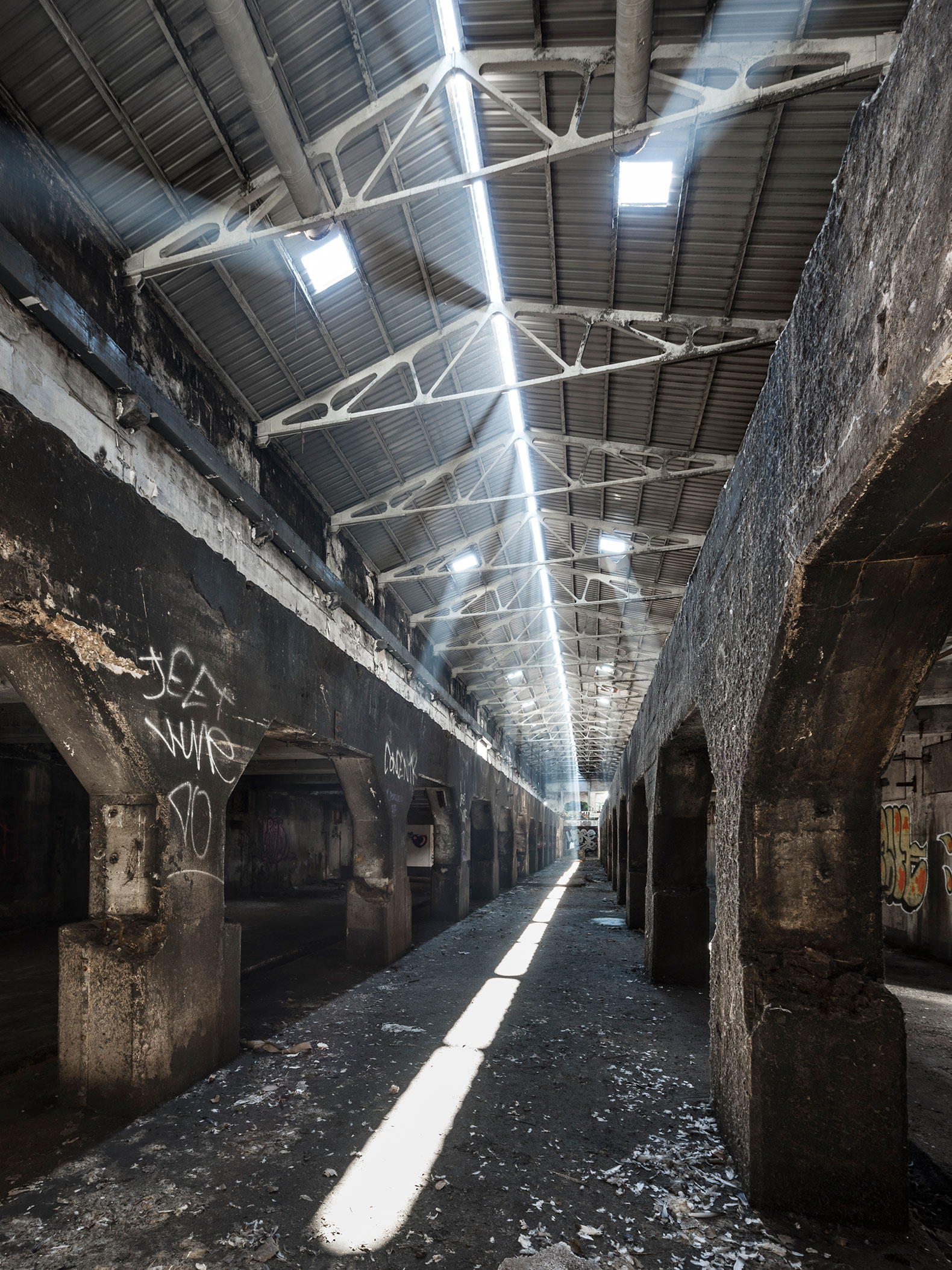
Smurtif Kappa SA. Valladolid. Photograph by Gabriel Gallegos Alonso.
In this kind of space the lighting conditions are not the most appropriate, so minimum resources - tripod and/or flash - are necessary to be able to take an acceptable photograph. I do not doubt that these years of photographing ruins have been useful, these sessions have taken place under a lot of pressure, in atmospheres with deficient hygienic conditions or with sometimes adverse weather conditions. What doesn't kill you makes you stronger.
When an architectural firm receives an order, it draws up the corresponding project and, if all the documentation is in order, it is approved. A construction company is then assigned to carry out the work, which will be completed in an increasingly uncertain time. The architectural and interior design photographer then comes into the picture. The architect (or the developer, or the contractor) commissions representative images of the newly completed, immaculate building. These photographs will be published in magazines and uploaded to the web and social networks and with them, he will try to get new commissions. Hence the importance of this figure, as a good professional can make even a mediocre project look attractive.
During the time the building is in operation, it is not so common to take photographs, unless we are talking about a tourist attraction or an architectural icon recognizable only by people in the trade, to which hordes of ETSA students will flock, camera in hand. Although these snapshots rarely match the technical quality of the initial reportage, it is possible, however, that they are capable of capturing a unique moment or of being more moving, as architectural photography can sometimes be too cold and lack that component more common in other genres. It is difficult, however, to focus on the technical side and make the viewer connect emotionally with the scene. Fernando Guerra, a Portuguese photographer, masterfully integrates the building with the users and their surroundings without neglecting the main objective, which is to document the work, in the same way, that Julius Shulman was able to introduce us to an ordinary day in an American family.

Depopulated area of Vea. Soria. Photograph by Gabriel Gallegos Alonso.
And then we come to the end, the moment when what was once innovative is no longer useful, interesting, or beneficial. As with people, a building also suffers from the passage of time, it ages after a life full of experiences and this is manifested in its external appearance, more deteriorated and imperfect, but no less attractive or interesting for that.
Nowadays it is common to observe how many objects are made with an intentionally old, used, "vintage" appearance. People long for the past. It is no secret that the golden age of the design world, including architecture, is over. Thus, most of the explorations I make could be considered as the last glimpse of a way of building that once might have been revolutionary but today is obsolete. Essential and traditional architecture that we are gradually losing and that is rarely recovered. I have had the good fortune to be able to visit some buildings that are considered authentic jewels of the most recent history of our architecture. Colossal volumes of concrete, detailed industrial buildings in glass and steel, masterfully executed brick constructions, old deserted areas built only with masonry and wooden structures..., some of them listed in the Iberian DO.CO.MO.MO, the organization in charge of disseminating the most representative works of the modern movement, such as the factories NITRASTUR, FEFASA, ENSIDESA, or the old brick factory of Viella, places that unfortunately cannot be accessed except in this way. And that is a pity.
This unfinished photographic series is, in short, an attempt to give value to some of those buildings abandoned to their fate and to show them with the same rigor with which they could be portrayed at their best. To restore their dignity. To extol decadence. To reflect on the value of time and destruction.






























































